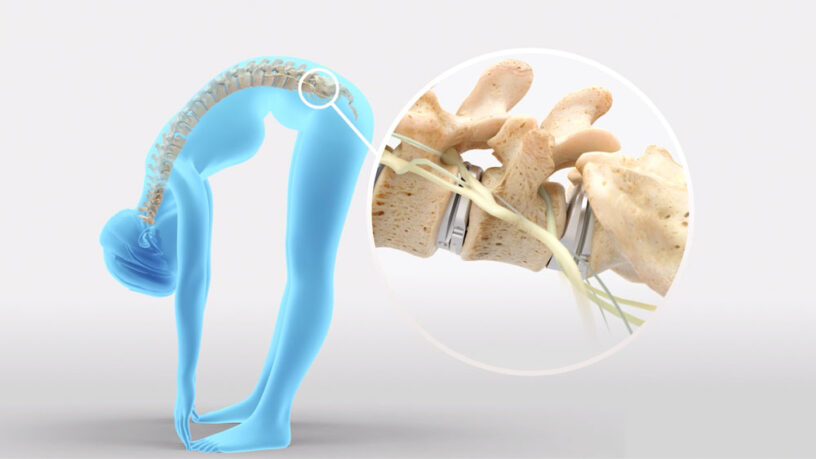The motion preservation market refers to the segment of the medical device industry focused on technologies and solutions designed to maintain or restore natural movement in the spine, particularly after injury or degeneration. This market primarily involves products and procedures that aim to preserve spinal mobility compared to traditional spinal fusion methods. Here’s an overview of the market:
1. Market Size and Growth:
- Market Size: The global motion preservation market is significant and growing, driven by advancements in spinal surgery technologies, an aging population, and increasing awareness of the benefits of motion-preserving solutions. The market includes devices such as artificial discs, motion-preserving spinal implants, and other innovative spinal technologies.
- Growth Drivers: Key drivers include the rising prevalence of spinal disorders, advancements in minimally invasive surgical techniques, and the advantages of motion-preserving solutions over traditional fusion surgeries, such as maintaining spinal flexibility and reducing adjacent segment degeneration.
- Regional Variations: North America holds a major share of the market due to advanced healthcare infrastructure, high adoption rates of new technologies, and strong research and development activities. Europe and Asia-Pacific are also important markets, with significant growth expected in Asia-Pacific due to increasing healthcare access and an aging population.
2. Key Components of the Market:
- Product Types:
- Artificial Discs: Devices implanted to replace damaged or degenerated intervertebral discs. They are designed to mimic the natural motion of the spine and provide relief from pain while preserving spinal movement.
- Spinal Implants: Includes motion-preserving implants such as dynamic stabilization systems, which aim to provide stability while allowing for some degree of movement, and flexible rods or plates that adjust to spinal movement.
- Interspinous Process Devices: Devices implanted between the spinous processes of the vertebrae to relieve pressure on the spinal nerves while preserving some level of spinal motion.
- Techniques:
- Artificial Disc Replacement (ADR): A procedure that involves replacing a damaged disc with an artificial one to maintain spinal motion and reduce pain.
- Dynamic Stabilization: A technique that uses implants to stabilize the spine while allowing for natural movement, as opposed to rigid fusion.
- Minimally Invasive Surgery (MIS): Techniques that use smaller incisions and advanced imaging to perform spinal procedures with less disruption to surrounding tissues, often used in conjunction with motion-preserving technologies.
- End Users:
- Hospitals and Surgical Centers: Primary users of motion preservation devices, where spinal surgeries are performed by orthopedic surgeons and neurosurgeons.
- Specialty Spine Clinics: Clinics specializing in spinal disorders and surgeries, often offering advanced motion-preserving procedures and technologies.
- Patients: Individuals suffering from spinal disorders or injuries who seek alternatives to traditional spinal fusion surgery.
3. Key Factors Driving the Market:
- Rising Prevalence of Spinal Disorders: The increasing incidence of spinal conditions such as degenerative disc disease, herniated discs, and spinal stenosis drives the demand for motion-preserving treatments.
- Advancements in Technology: Innovations in spinal implants and surgical techniques are improving outcomes and driving adoption of motion-preserving solutions.
- Patient Preference for Mobility: Growing patient preference for treatments that preserve spinal mobility and reduce long-term complications compared to traditional fusion surgery.
- Minimally Invasive Techniques: The shift towards minimally invasive surgical approaches, which offer quicker recovery times and less postoperative discomfort, supports the growth of the motion preservation market.
4. Trends:
- Next-Generation Implants: Development of next-generation artificial discs and spinal implants with improved materials and designs that better mimic natural spinal motion and enhance patient outcomes.
- Personalized Medicine: Increasing focus on personalized approaches to spinal surgery, including custom-fit implants and tailored treatment plans based on individual patient anatomy and needs.
- Integration with Robotics and Navigation: Integration of robotics and advanced navigation systems in spinal surgeries to improve precision, outcomes, and patient safety.
- Increased Research and Development: Ongoing research and development efforts to explore new technologies and improve existing motion-preserving solutions, including collaboration between medical device companies and research institutions.
5. Challenges:
- High Costs: Motion-preserving spinal devices and advanced surgical techniques can be expensive, potentially limiting access for some patients and affecting market growth.
- Regulatory Hurdles: Stringent regulatory requirements for spinal devices can delay the approval and introduction of new technologies to the market.
- Risk of Complications: While motion-preserving procedures generally have favorable outcomes, there is still a risk of complications or device failure, which can impact patient satisfaction and market growth.
- Competition from Traditional Methods: The market faces competition from traditional spinal fusion techniques, which are well-established and have a long track record of success.
Get Free Exclusive PDF Sample Copy of This Research Report https://stringentdatalytics.com/sample-request/motion-preservation-market/15611/
Market Segmentations:
Global Motion Preservation Market: By Company
Medtronic
DeBuy Synthes
NuVasive
AxioMed
Globus Medical
joimax
Spinal Kinetics
Vertebral Technologies
Orthofix
Global Motion Preservation Market: By Type
Cervical Artificial Disc
Lumbar Artificial Disc
Interspine Spacers
Global Motion Preservation Market: By Application
Hospitals
Ambulatory Surgical Center
Global Motion Preservation Market: Regional Analysis
The regional analysis of the global Motion Preservation market provides insights into the market’s performance across different regions of the world. The analysis is based on recent and future trends and includes market forecast for the prediction period. The countries covered in the regional analysis of the Motion Preservation market report are as follows:
North America: The North America region includes the U.S., Canada, and Mexico. The U.S. is the largest market for Cold-chain Pharma in this region, followed by Canada and Mexico. The market growth in this region is primarily driven by the presence of key market players and the increasing demand for the product.
Europe: The Europe region includes Germany, France, U.K., Russia, Italy, Spain, Turkey, Netherlands, Switzerland, Belgium, and Rest of Europe. Germany is the largest market for Cold-chain Pharma in this region, followed by the U.K. and France. The market growth in this region is driven by the increasing demand for the product in the automotive and aerospace sectors.
Asia-Pacific: The Asia-Pacific region includes Singapore, Malaysia, Australia, Thailand, Indonesia, Philippines, China, Japan, India, South Korea, and Rest of Asia-Pacific. China is the largest market for Cold-chain Pharma in this region, followed by Japan and India. The market growth in this region is driven by the increasing adoption of the product in various end-use industries, such as automotive, aerospace, and construction.
Middle East and Africa: The Middle East and Africa region includes Saudi Arabia, U.A.E, South Africa, Egypt, Israel, and Rest of Middle East and Africa. The market growth in this region is driven by the increasing demand for the product in the aerospace and defense sectors.
South America: The South America region includes Argentina, Brazil, and Rest of South America. Brazil is the largest market for Cold-chain Pharma in this region, followed by Argentina. The market growth in this region is primarily driven by the increasing demand for the product in the automotive sector.
Click Here, To Buy Premium Report https://stringentdatalytics.com/purchase/motion-preservation-market/15611/?license=single
About Stringent Datalytics
Stringent Datalytics offers both custom and syndicated market research reports. Custom market research reports are tailored to a specific client’s needs and requirements. These reports provide unique insights into a particular industry or market segment and can help businesses make informed decisions about their strategies and operations.
Syndicated market research reports, on the other hand, are pre-existing reports that are available for purchase by multiple clients. These reports are often produced on a regular basis, such as annually or quarterly, and cover a broad range of industries and market segments. Syndicated reports provide clients with insights into industry trends, market sizes, and competitive landscapes. By offering both custom and syndicated reports, Stringent Datalytics can provide clients with a range of market research solutions that can be customized to their specific needs.
Contact Us
Stringent Datalytics
Contact No- +1 346 666 6655
Email Id- sales@stringentdatalytics.com




Leave a Reply